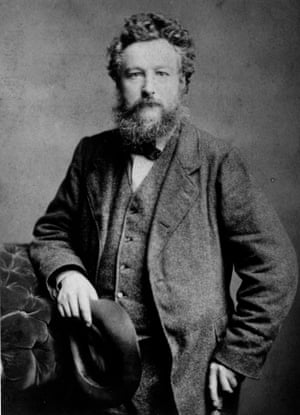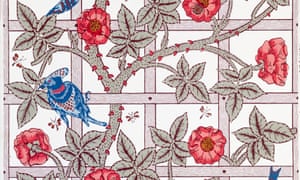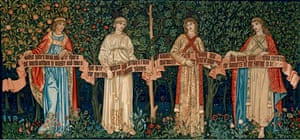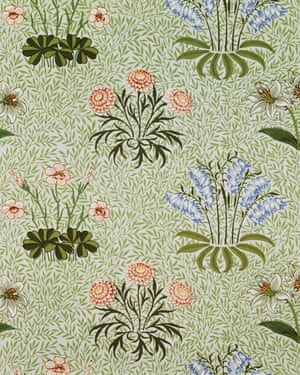The English craftsman’s birthday is celebrated by Google today, and his designs for fonts, wallpaper and textiles remain relevant today – as do his ideas about the ravages of capitalism
William Morris was a Marxist with a very spiritual passion for beauty – a paradoxical visionary who saw no contradiction between socialism and soft furnishings. Today’s Google doodle goes to the heart of his genius because it captures his joy in repetition, his love of the middle ages and his dream of a culture at one with nature.

To mark the date of Morris’s birth (24 March 1834) the search engine has emblazoned itself with a variety of his symmetrical designs that herald the word Google, written in a version of the medievalist fonts he designed for his Kelmscott Press.
This is Morris’s quirkiness done to a T: the man who mourned the death of traditional crafts and longed to restore what he imagined were the communal values of the middle ages also designed fonts that still look good in the internet age. Not that the Kelmscott Press was a pioneer of mass communication. Morris published exquisitely beautiful editions of Chaucer, and his own poems and utopian writings. The going rate for a first edition of the Kelmscott Chaucer today is more than £30,000, but it was not cheap in the 1890s, either.
Morris was driven by the two abiding rages of his life, against the ugliness and injustice of capitalist society. Capitalism is the word he used, as opposed to “industrial society” or “the modern world”, after he read and embraced the writings of Karl Marx and became a Marxist in the 1880s. Much earlier though, what turned him into a rebel against Victorian Britain was the sheer ugliness and tackiness of the middle class luxuries that filled the Great Exhibition in 1851.
This colossal event, staged in the specially built Crystal Palace in Hyde Park, was full of new-gothic, neo-Renaissance, neo-everything nightmares of bad design and ponderous art. Morris as a youth was horrified and appalled. He dedicated his life to inventing beautiful and useful products for the modern world. The results are still enjoyed today. Wallpapers, textiles, books – Morris created things of real distinction.
He showed that mass production – of a kind – can be beautiful. His patterns for carpets and wall hangings are medievalist yet modern: even abstract. From looking at Islamic as well as western sources he saw the beauty of repetition, symmetry and simplification. The beauty of a William Morris pattern, that the Google doodle captures very well, lies in its combination of simplicity and richness.
Morris ran his workshops as a craft society where the worker, he hoped, was truly fulfilled. This kind of medievalist utopia owes less to Marx than it does to his other intellectual mentor, the Victorian art critic John Ruskin. For Ruskin too, industrial society was evil and the middle ages offered a better model of social solidarity and happiness in work. Ruskin was a compassionate Tory who got his students at Oxford – including the young Oscar Wilde – to built a road so they could learn the dignity of manual labour. Morris took Ruskin’s belief that art and architecture are moral acts and made it socialist.
Wilde said the trouble with socialism is “that it takes too many evenings”. Morris put in the evenings, while his wife Jane was kept happy by the painter Rossetti, and has been a hero to the labour movement ever since. Yet it’s wrong to turn either him or Ruskin into sentimental icons of anti-capitalism. Their ideas are more subtle than that.
It is fascinating that Google has created its Morris doodle at the same time that it is leading the world in artificial intelligence. How is AI going to change the world of work? Will human work as we know it vanish – and if so, what will people do? A utopian answer might be that all work becomes an art, and human potential is directed to the creation of beauty and happiness instead of mere things.
You may say I’m a dreamer, but I’m not the only one. In fact I am just describing the vision of William Morris. Happy birthday to the man who brought us News from Nowhere.



No comments:
Post a Comment